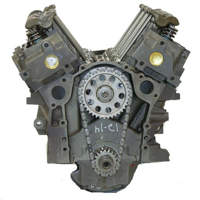Explore the Key Features of the 2.2 Ford Ranger Engine and Its Fuel Efficiency
Explore the Key Features of the 2.2 Ford Ranger Engine and Its Fuel Efficiency
Blog Article
What Makes a Vehicle Engine Run Efficiently: Top Tips for Optimum Care
The smooth procedure of a cars and truck engine is essential to both performance and long life, making ideal treatment an important obligation for lorry owners. What certain steps should you prioritize to guarantee your engine remains in peak problem?
Normal Oil Changes
One of the most vital aspects of cars and truck maintenance is ensuring your engine receives normal oil adjustments. Engine oil lubricates inner parts, lowers friction, and aids keep optimum operating temperature levels. Gradually, oil weakens due to heat, impurities, and the all-natural by-products of burning, bring about minimized effectiveness and possible engine damages.
Most manufacturers recommend transforming the oil every 5,000 to 7,500 miles, but this interval can differ based on driving conditions and oil type. Artificial oils might permit for longer periods in between modifications. Routine oil changes not just improve engine performance but also improve fuel efficiency, as tidy oil promotes smoother procedure.
Neglecting oil adjustments can result in sludge buildup, which impairs flow and can cause serious engine issues. It is important to examine oil degrees regularly and keep track of for any kind of unusual changes in color or consistency, which might suggest contamination or deterioration.

Maintaining Coolant Degrees
Maintaining correct coolant levels is crucial for avoiding engine overheating and ensuring optimum performance. The coolant, normally a mixture of water and antifreeze, distributes via the engine, absorbing heat and protecting against thermal stress and anxiety. Inadequate coolant can cause enhanced engine temperature levels, which might cause extreme damages and even overall engine failing.
To preserve ideal coolant levels, regularly inspect the coolant storage tank, generally found in the engine bay. Guarantee the coolant is filled to the suggested mark, as suggested in your automobile's owner guidebook. It is recommended to examine the degrees at the very least as soon as a month or before lengthy trips, especially during severe climate conditions.
If you observe that the coolant degree is constantly reduced, there might be a leakage in the cooling system, which ought to be attended to immediately to prevent further problems. 2.2 ford ranger engine. Furthermore, flushing the coolant system every a couple of years can assist get rid of any kind of accumulated debris and make sure efficient warmth exchange
Monitoring Air Filters

It is advised to examine the air filter every 12,000 to 15,000 miles, or more regularly if driving in negative or dusty problems. An easy visual assessment can frequently disclose whether the filter is dirty or harmed. It ought to be changed promptly. if the filter shows up tarnished or has noticeable dust accumulation.
Using a top quality air filter made for your details automobile design can additionally improve engine efficiency. Furthermore, some cars may profit from reusable filters that can be cleansed and re-installed, offering a ecologically friendly and cost-effective option.
Inspecting Flicker Plugs
Spark plugs are vital components of a car's ignition system, straight influencing engine efficiency and efficiency. They create the stimulate that ignites the air-fuel mixture in the combustion chamber, helping with the engine's power generation. Regular inspection of trigger plugs is crucial for keeping ideal engine feature and protecting against potential problems.
Throughout an examination, search for indicators of wear or damages, such as fractures, carbon build-up, or extreme void widening. A healthy and balanced ignition system generally shows a light brown or tan shade. Dark residue or oil deposits can suggest improper burning, while a blistered or white appearance may suggest overheating. Both conditions need immediate interest to protect against further engine damage.
It's recommended to check trigger plugs every 30,000 miles, or as suggested in your car's owner handbook. find out here Furthermore, take into consideration changing them according to the manufacturer's guidelines, as old or worn ignition system can result in misfires, decreased fuel efficiency, and enhanced emissions.
Tracking Tire Stress
Ensuring proper tire pressure is an important element of lorry security and efficiency. Under-inflated tires can lead to lowered fuel efficiency, raised tire wear, and compromised handling. Alternatively, over-inflated tires can reduce traction and raise the risk of blowouts. Regular surveillance of tire pressure is important for optimal automobile operation.
Tire stress need to be inspected a minimum of when a month and before long journeys. Utilize a trusted tire pressure scale to gauge the stress when the tires are cold, preferably before the vehicle has actually been driven for a minimum of 3 hours. Refer to the vehicle's owner guidebook or the placard located on the chauffeur's side door jamb for the supplier's advised stress levels.
It is very important to keep in mind that tire stress can vary with adjustments in temperature level; a decrease of 10 ° F can cause a 1-2 psi decline in pressure. Additionally, visually inspect tires for any indicators of wear or damages click here for more during your tracking regimen. Preserving correct tire pressure not just improves car safety however likewise enhances fuel effectiveness and prolongs tire life, eventually adding to a smoother engine efficiency.
Final Thought
In verdict, keeping a vehicle engine's smooth operation calls for diligent focus to numerous vital variables. Ultimately, a positive method to engine treatment is crucial for making certain reliability and functionality over time.
One of the most essential elements of vehicle upkeep is ensuring your engine gets routine oil adjustments. Engine oil lubes interior parts, minimizes rubbing, and assists maintain optimum operating temperatures. Routine oil modifications not just improve engine efficiency but also boost fuel performance, as tidy oil promotes smoother procedure.
Not enough coolant can lead to raised engine temperature levels, which might cause extreme damage or also overall engine failing.

Report this page